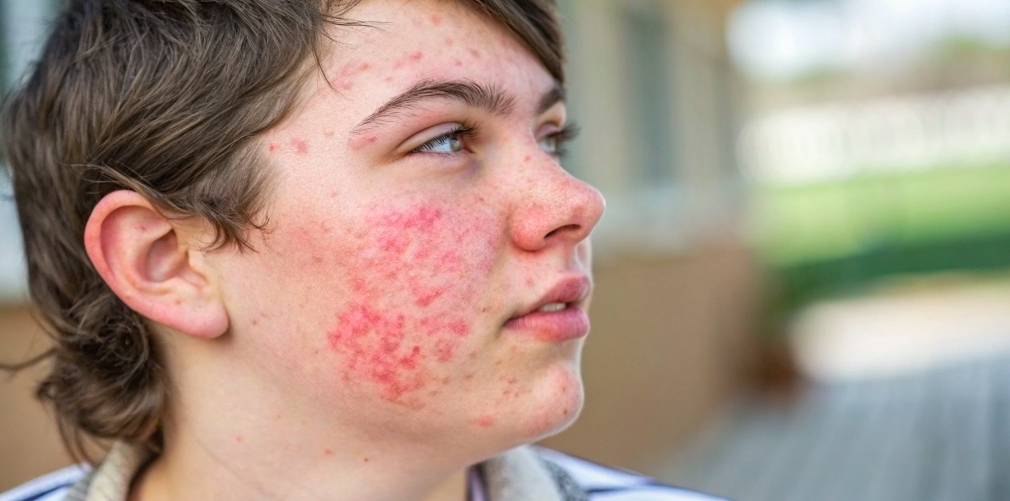Allergies are a widespread health concern, affecting millions of people worldwide. While common allergies like pollen, dust mites, and pet dander are well-known, there is a fascinating subset of rare and uncommon allergies that can surprise even the most experienced medical professionals. These unique allergies, such as reactions to water, vibrations, or certain meats, raise questions like: “What is the rarest allergy?” and “What are the least common allergies people can have?” Exploring these extraordinary conditions, along with the diagnosis and management of allergies, provides insight into how diverse and complex our immune systems truly are.
Understanding Rare Allergies
Rare allergies are uncommon conditions where the immune system overreacts to a substance or stimulus that is generally harmless. While most people associate allergies with environmental triggers, rare allergies often involve unexpected and unusual allergens. These conditions can be difficult to diagnose and treat due to their rarity and the limited understanding surrounding them.
Top 10 Rarest Allergies
Let’s delve into some of the least common allergies that exist and explore how they impact those affected.
1. Water Allergy (Aquagenic Urticaria)
Water allergy, also known as aquagenic urticaria, is one of the rarest allergies in the world. People with this condition develop hives or a rash after coming into contact with water, regardless of its temperature or source. Daily activities like bathing, swimming, or even sweating can become challenging for those affected.
2. Vibration Allergy (Vibratory Urticaria)
Vibration allergy occurs when exposure to vibrations, such as from using a lawnmower or riding in a car, triggers skin reactions like hives or swelling. This rare condition can significantly impact daily life, making routine activities uncomfortable or even painful.
3. Red Meat Allergy (Alpha-Gal Syndrome)
Alpha-Gal Syndrome is an uncommon allergy caused by a reaction to a carbohydrate found in mammalian meat, such as beef, pork, or lamb. It’s often triggered by a tick bite, which introduces the alpha-gal molecule into the bloodstream. Symptoms may include gastrointestinal distress, hives, or even anaphylaxis.
4. Cold-Induced Allergy (Cold Urticaria)
Cold urticaria is an allergy to cold temperatures, where exposure to cold air, water, or objects causes hives, swelling, or itching. Severe cases can result in systemic reactions, such as difficulty breathing or low blood pressure, particularly when swimming in cold water.
5. Sun Allergy (Solar Urticaria)
Solar urticaria is a rare allergy to sunlight. People with this condition develop red, itchy, or swollen skin within minutes of sun exposure. Protective clothing and high-SPF sunscreen are essential for managing this allergy.
6. Exercise-Induced Anaphylaxis
Exercise-induced anaphylaxis is a life-threatening condition where physical activity triggers severe allergic reactions. Sometimes, the reaction is linked to specific foods consumed before exercise. Symptoms include hives, difficulty breathing, and in extreme cases, anaphylactic shock.
7. Allergy to Human Touch (Dermatographia)
Dermatographia, also known as skin writing, causes the skin to become red, raised, or itchy after being scratched or lightly touched. While not life-threatening, it can be uncomfortable and affect quality of life.
8. Plastic Allergy
While allergies to natural materials like latex are well-documented, plastic allergies are extremely rare. Reactions may occur due to chemical additives in plastics, causing symptoms such as skin irritation or respiratory distress.
9. Wood Allergy
Some people develop allergies to specific types of wood, often due to contact with sawdust or wood particles. Symptoms include skin rashes, respiratory problems, and eye irritation, making woodworking or carpentry challenging for those affected.
10. Allergy to Fruits or Vegetables in the Nightshade Family
Rare allergies to nightshade plants like tomatoes, eggplants, and bell peppers can cause symptoms ranging from oral itching to severe gastrointestinal distress. Avoiding these foods is the primary way to manage this condition.
What Is the Rarest Allergy?
Determining the absolute rarest allergy is challenging, as some conditions are so uncommon that only a handful of cases are documented worldwide. However, aquagenic urticaria (water allergy) is often considered one of the rarest allergies due to its extreme rarity and the profound impact it has on daily life.
Diagnosis and Management of Rare Allergies
Diagnosing and managing rare allergies can be complex. Here are the key steps involved:
1. Diagnosis
- Detailed Medical History: Understanding the patient’s symptoms, triggers, and family history of allergies is crucial.
- Allergy Testing: Skin prick tests, blood tests, or elimination diets can help identify uncommon allergens.
- Specialized Tests: For conditions like aquagenic or vibratory urticaria, exposure tests under controlled conditions may be required.
2. Management
- Avoidance: The most effective way to manage rare allergies is to avoid the triggering substance or stimulus.
- Medications: Antihistamines, corticosteroids, or epinephrine (for severe reactions) may be prescribed to manage symptoms.
- Lifestyle Modifications: Adapting daily routines to minimize exposure to allergens is essential for those with rare allergies.
- Desensitization Therapy: In some cases, immunotherapy may help reduce sensitivity to specific allergens.
Living with Uncommon Allergies
Living with rare allergies requires a proactive approach to minimize risks and maintain a good quality of life. Here are some tips:
- Educate Yourself and Others: Understanding your condition and educating family, friends, and colleagues can help create a supportive environment.
- Carry Emergency Medications: If your allergy has the potential to cause severe reactions, always carry medications like epinephrine auto-injectors.
- Consult Specialists: Work closely with allergists or immunologists to develop a personalized management plan.
- Join Support Groups: Connecting with others who have rare allergies can provide emotional support and practical advice.
Final Thoughts on Rare Allergies
Rare allergies highlight the incredible diversity of the human immune system and the challenges faced by those living with uncommon conditions. If you’ve ever wondered, “What is the rarest allergy?” or “What are the top 10 rarest allergies?” the conditions discussed here provide a glimpse into this fascinating realm of medical science. While these allergies may be uncommon, understanding their causes, symptoms, and management options is essential for ensuring the health and well-being of those affected.
